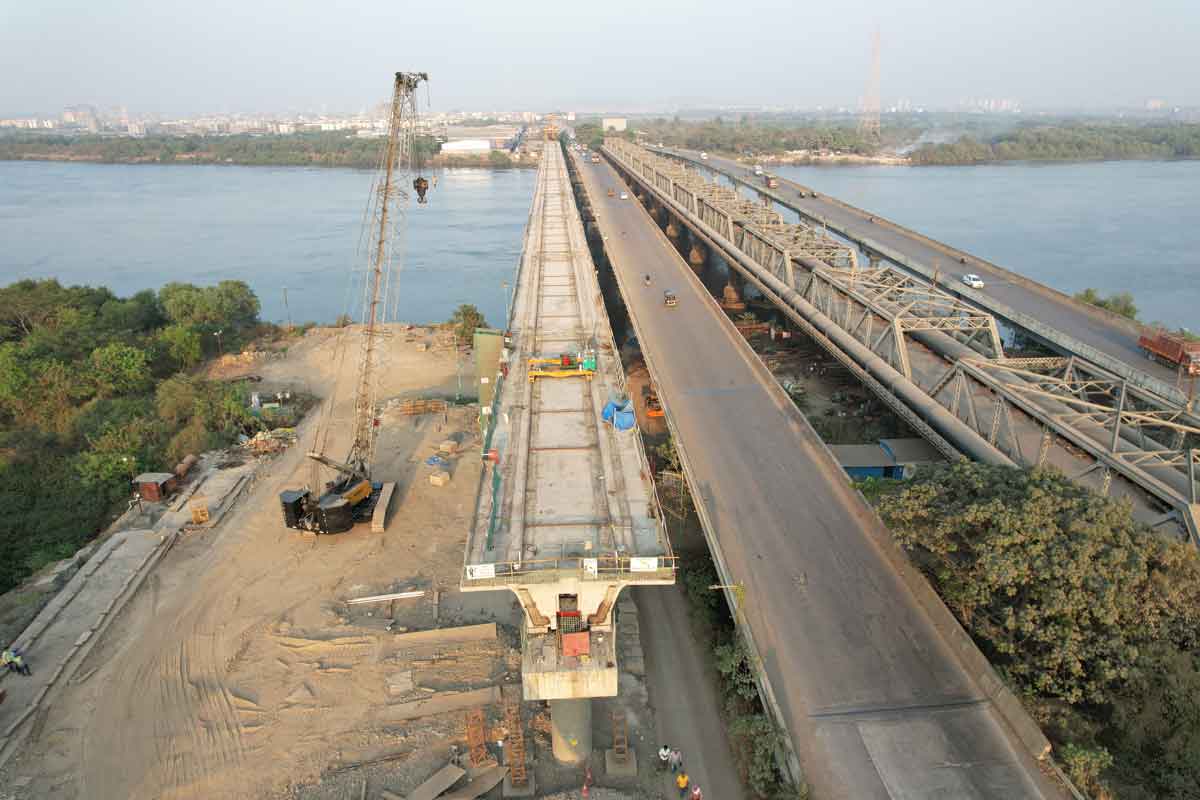

The wait to witness a metro viaduct pass over a water body was over with the last span of the 550-m Kasheli Creek metro viaduct in the Mumbai Metropolitan Region (MMR) is erected. This is part of Phase 1 of the Mumbai Metro Line 5, connecting Thane to Kalyan via Bhiwandi. The Kasheli Creek bridge - first to be crossing the creek- comprises 13 spans, including nine on water, with each span being 42.23 m in length with 15 segments. What’s more, the spans were erected with the help of launching girders in around four months - precisely 123 days.
The bridge has been constructed by Mumbai-based Afcons. Asked how the construction was achieved in just 123 days, Sukesh Singh, Project Manager, Afcons Infrastructure, replies, “The day-to-day activities were monitored at a micro level and exclusive resources were allocated.”
“The piles were constructed using a reverse circular drilling (RCD) machine,” shares Singh. “A barge of 2,143 mtcapacity and crawler crane of 150 mt along with vibro hammer, diesel generators and tugboat were used.” He adds that the shutter arrangement for the pile cap was built by supporting on a permanent liner of piles. The piers and pier caps were cast by making supporting arrangement on pile caps.
The major difference in constructing a metro line over water compared to land isdifferent logistics arrangements.In a marine-based project, all logistics must be done via a temporary jetty whereas on land, all the required material can reach exact span locations. It also requires additional floating devices with provisions to carry heavy equipment like aRCD machine and cranes required for marine construction. “Special safety precautions like life jackets, proper access to floating devices and standby divers are to be ensured,” says Singh.“While executing superstructure erection, such as launching of segments, every single segment was to be fed from the land,i.e. rear feeding by trolley arrangement requiring additional resources and time.
In marine construction, meticulous planning and close monitoring are extremely important. The movement of material and resources need to be manoeuvred as per tidal conditions, which needs experienced supervision and required hydrological data.
A hanging shutter arrangement was used for casting the tie beams at navigational spans and segment feeding was done with the help of a trolley arrangement from the rear end of launching of segments.
However, owing to meticulous planning and close monitoring of equipment and processes, the team was able to construct 22 tie beams within four months. The use of hanging platform methodology instead of conventional methods saved over 60 per cent of the time required for fixingcollars for the precast pier caps.
This bridge is part of Phase1of the Mumbai Metro Line 5. With almost 75 per cent of the project completed, the remaining work is in progress and is expected to be completed by the end of 2023.